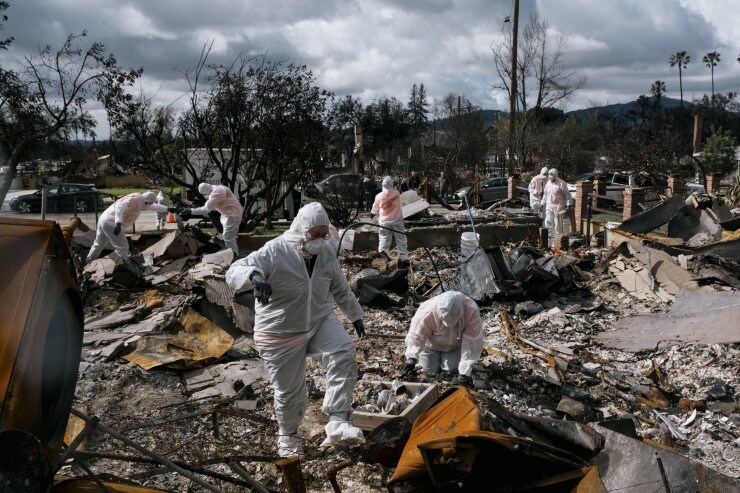Insurers need more collaboration and partnership to make natural catastrophe (nat cat) models more effective, according to insurance executives who spoke in a recent Insurtech Insights webcast.

Government, academia, actuaries, distributors, reinsurers and others all have something to offer to help build or improve upon nat cat models, said Angela Grant, chief legal officer and corporate secretary at Palomar, a specialty insurer. Grant spoke about working with the
"All the perils are converging at this point, so being able to work in collaboration with all of the different stakeholders is important," she said. Insurers and reinsurers should share data with partners in these other fields that observe or affect the insurance industry, for the collective benefit of all, Grant added.

For insurance underwriting to become more granular, insurers need data showing which properties are more resilient, according to Omar Issa, co-founder and CEO of ResiQuant, an AI property intelligence insurtech.
The same granular data that can boost an insurer's operational efficiency also can be fed into cat models for granular insights, Issa explained.

Without the data sharing Grant described, insurers can be at a disadvantage. They have data about their policyholders, but no data about the neighbors of those policyholders, observed Matt Chamberlain, principal at Milliman, a consulting firm that introduced its
The catastrophic risk atlas connects cat models with data from catastrophe bonds, insurance-linked securities based on risk-adjusted expected losses, according to Chamberlain. Insurers could also benefit from connecting with academic researchers studying nat cat risks, according to Grant. She pointed to Palomar's partnerships with Princeton University for studying flood risk and with the University of North Carolina Chapel Hill to study the effect of droughts on crops for its crop insurance policyholders.
Overall, improving nat cat models helps more people get home insurance, Grant said. "As a carrier, we get pitched all the time about different concepts and ideas, and if they haven't really been vetted by the industry first, it's hard for us as carriers to make the connection," she said. "It's a challenge for everyone, to find the solve for all of this, because the goal really is to make communities more resilient by making sure they have insurance."
Related story:






